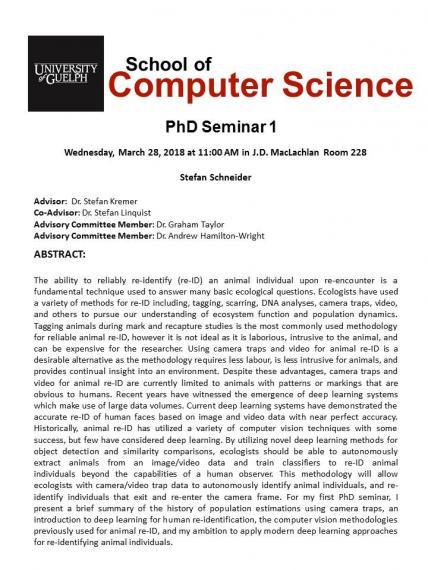PhD Seminar: Stefan Schneider
Date and Time
Location
J.D. MacLachlan Room 228

Details
ABSTRACT:
The ability to reliably re-identify (re-ID) an animal individual upon re-encounter is a fundamental technique used to answer many basic ecological questions. Ecologists have used a variety of methods for re-ID including, tagging, scarring, DNA analyses, camera traps, video, and others to pursue our understanding of ecosystem function and population dynamics. Tagging animals during mark and recapture studies is the most commonly used methodology for reliable animal re-ID, however it is not ideal as it is laborious, intrusive to the animal, and can be expensive for the researcher. Using camera traps and video for animal re-ID is a desirable alternative as the methodology requires less labour, is less intrusive for animals, and provides continual insight into an environment. Despite these advantages, camera traps and video for animal re-ID are currently limited to animals with patterns or markings that are obvious to humans. Recent years have witnessed the emergence of deep learning systems which make use of large data volumes. Current deep learning systems have demonstrated the accurate re-ID of human faces based on image and video data with near perfect accuracy. Historically, animal re-ID has utilized a variety of computer vision techniques with some success, but few have considered deep learning. By utilizing novel deep learning methods for object detection and similarity comparisons, ecologists should be able to autonomously extract animals from an image/video data and train classifiers to re-ID animal
individuals beyond the capabilities of a human observer. This methodology will allow ecologists with camera/video trap data to autonomously identify animal individuals, and re-identify individuals that exit and re-enter the camera frame. For my first PhD seminar, I present a brief summary of the history of population estimations using camera traps, an introduction to deep learning for human re-identification, the computer vision methodologies previously used for animal re-ID, and my ambition to apply modern deep learning approaches for re-identifying animal individuals.